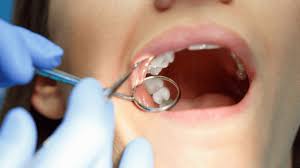


Dental sealants are plastic coatings commonly applied to the chewing surfaces of permanent molars, premolars, and the back surfaces of teeth to protect them from damage.
The chewing surfaces of molars and premolars contain grooves that make them susceptible to decay. These grooves can be deep, challenging to clean, and may be more confined than a single toothbrush bristle. Plaque can accumulate in these areas, and the acid produced by bacteria in the plaque can attack the enamel, leading to the development of cavities. Dental sealants provide additional protection for these grooved and pitted areas by creating a smooth surface.
They are particularly helpful in preventing cavities in children’s teeth. This thin layer adheres easily to the teeth and acts like a protective shield for the enamel. It’s essential to note that dental sealants are not a substitute for brushing and flossing but can be beneficial in preventing the initiation of cavities. Dental sealants act early to prevent cavities from forming.
Applying dental sealants is a painless process, often done with the assistance of a dentist. The sealant material adheres directly to the enamel, providing an additional layer of protection for specific areas. Dental sealants only protect the surfaces to which they are applied. Fluoride aids in preventing cavities on all tooth surfaces.
Usefulness for Children:
Cavities are frequently observed in children and teenagers. Therefore, parents often opt for dental sealants to prevent cavities. Although adults can also use dental sealants for tooth protection, they are primarily effective in preventing the onset of cavities in teeth aged 6 to 14 years.
The Dental Sealant Procedure:
1. Thoroughly clean the teeth where sealants will be applied.
2. Dry each tooth.
3. Apply an acidic solution to the chewing surface to help the sealant adhere.
4. Rinse off the acid and dry the tooth.
5. Apply the sealant to the tooth, and in some cases, a special curing light may be used to harden the sealant.
Regular oral check-ups with dental professionals are advised to maintain optimal dental health.
The author is the Dental Surgeon & Cosmetologist at Enka Hospital.